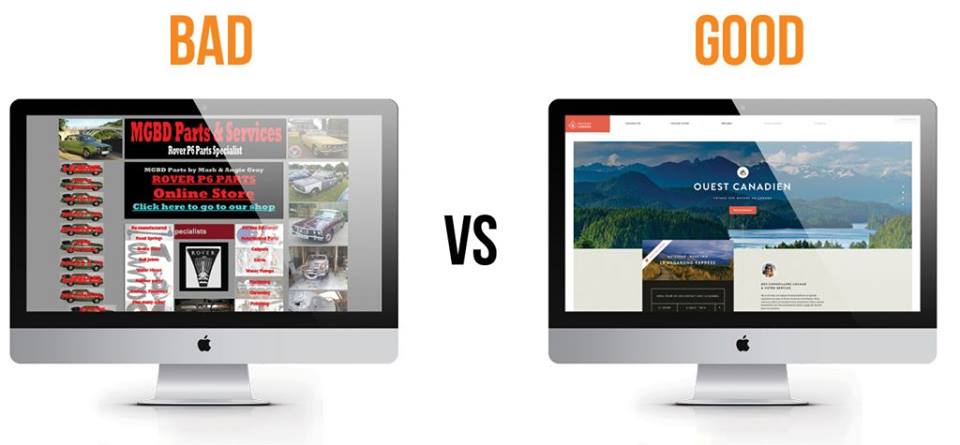
As an online entrepreneur with a business website, low speed can affect the bottom-line. Very few people are patient enough to wait for it to load – if it takes too long. For this reason, only a few people will be able to access your website and read the information uploaded on it. For an e-commerce store to sell, your business website must have high traffic in order to conquer the competition in the online market. The best way to achieve this is to ensure that your website loading speed is very high. No matter how fast your Web Hosting is, some optimization on the website can boost speeds even further. Here are some tips that can help you improve your website loading speed. Where the suggestions are too technical, it is a good idea to share them with your website developer.
1. Compress images
Images usually take up the largest number of HTTP requests sent to a website. It is a perfect idea to get rid of the ones you do not need. Afterwards, identify the remaining ones and inspect their sizes. There are types of image-compressing software that you can use to reduce the image sizes. Making sure that each image occupies at most 150KB can save you a lot of space, guaranteeing a faster loading of your website.
2. Enable browser caching
Browser caching enables your website visitors to store their downloaded files temporarily. This creates a memory on the browser history, enabling the page to load in the future even without sending an HTTP request. Caching is just a way of storage that allows the user to access other pages faster without losing the previous downloads. This makes the overall website loading faster.
3. Reduce the number of HTTP requests
Every time you open a website, HTTP requests are sent for each element on the page. To be precise, images, graphics, animations as well as other elements on the website have their own HTTP requests that enable them to load. Loading all these elements of your website lowers the loading speed. The best thing to do is to make sure you highly minimize these requests so as to improve speed. You can also delete the files that you do not actually need.
4. Compress and Combine files
With so many HTTP requests being sent to open each element on your website, no doubt your loading speed will be very low. To ensure that visitors access and remain on your website for enough time, combining files is highly advisable. This aims at reducing the HTTP requests that can be sent to access all pages of your website. This will improve your loading speed as different files will share one request.
5. Defer large files
Large files usually occupy a lot of space. These files take a long time to fully load. For example, JavaScript files are large and can make the whole page to load slower. Deferring such files can prevent them from loading and hence giving time to other files to load faster. This improves the overall loading speed of your website.
6. Use a Content Delivery Network
As much as high levels of traffic on your website put your e-commerce business at a perfect place to blossom, they slow down the loading. Here, you cannot restrict access to improve speed. The best option is to ensure that the speed is improved even with high traffic. A CDN can help you get rid of the slow loading problem. Very distant visitors can also experience delays. A CDN enables you to temporarily store your website on the global network of servers. This enables the closest server to open the page upon request.
7. Host large files externally
As usual, large files occupy a very large space on your website. Videos are examples of large files that can be stored on your site. They make the overall loading of the website very slow. The worst scenario is when multiple visitors attempt to watch the video at the same time. To solve this, make use of external hosting platforms like YouTube. You can only include a link to the video on your website and direct visitors on the external platform. This saves a lot of space and improves the website loading speed.
8. Use fewer plugins
Plugins can be very essential for your website. They increase the user-friendliness of your pages, clean up codes, as well as add custom functionality. With the easy installation process, you can be tempted to have so many plugins on your site. Nevertheless, you have no idea how they can mess up your loading speed. They can also affect your security. For these reasons, it is prudent to minimize the number of plugins you install on your site so as to ensure that the loading speed is not too low. To achieve this, cut off plugins for tasks that you can perform manually. You can also identify tasks that one plugin can perform and delete others.
9. Minimize redirects
In most cases, redirects are used to enable users to access a new page through an old link. They are used where pages are deleted or moved without interfering with the link. However, redirects can really slow down your website loading speed, especially if there are too many of them. Identify all redirects present on your site and minimize them. Only retain those that you really need. This will improve the overall speed of your site and help visitors to access pages faster.
10. Design your website simply
A simple website contains very few elements that occupy less space. This means that the number of HTTP requests sent will be small. As a matter of fact, only one request can open all elements of the website. The simplicity maximizes the website loading speed
Conclusion
Website loading speed is the determinant of the traffic that will be on your site. The goal of each company is to have the highest traffic on its website. This is only achievable if the loading speed is high enough to retain visitors on the site. Using the tips in this article, you can highly improve your speed and enable your online business to blossom. You do not need to use every tip. Simply study your website and identify its problems. That way, you will be in a better position to find the solution

Online selling is the mode that every business entrepreneur wants to practice. This is due to the simplicity and fast speed involved in conducting advertisement, sales, and other transactions. Nevertheless, you may wonder why your e-commerce site has not added any substantial value to your business. Having created a website and put all features in place, you definitely expect your business to blossom in a few weeks if not days. This is not always the case. This article has a compilation of some reasons that may cause your e-commerce site not to sell.
The products target the wrong market
People of all ages and walks of life access the Internet. For you to sell online, you need to clearly and thoroughly describe your target market since not every internet user will be your client. Targeting the wrong audience may be the reason your website is not making sales since you launched it. Now, all you need to do is specify your target to create clarity to potential customers.
It is lowly positioned on the SEO rank
With millions of business websites on the internet, the competition is definitely stiff as each is fighting its way to the top. Traffic could be the reason your website is not being accessed by users. To solve this, launch a Search Engine Optimization campaign that will put your website in a better position to be found. Accessibility is very important when it comes to e-commerce.
#Ecommerncekenya #Digitalmarketingkenya #webdesignkenya #softwaredevelopmentkenya #socialmediakenya #onlinemarketingkenya..

10 Website Mistakes to Avoid – Small Business Tips
A bad website can be detrimental to your business so you’ll want to avoid as many website mistakes as you can. 75% of consumers admit that they will judge a business’s credibility based on how good their website design is. For the most part, you will only have about 15 seconds to gain a visitor’s attention before they leave, so you’ll want to make sure that you leave the best first impression possible. We’ve compiled 10 mistakes for you to avoid when putting your website together: 1. Out-of-date business information2. Too much text3. Bad images4. Being too “salesy”5. Slow load times6. No call to action7. Posting non-relevant content8. Not marketing your content9. Inconsistency in website design10. No social media integration Do you need a website? Yes you do! Find out why

